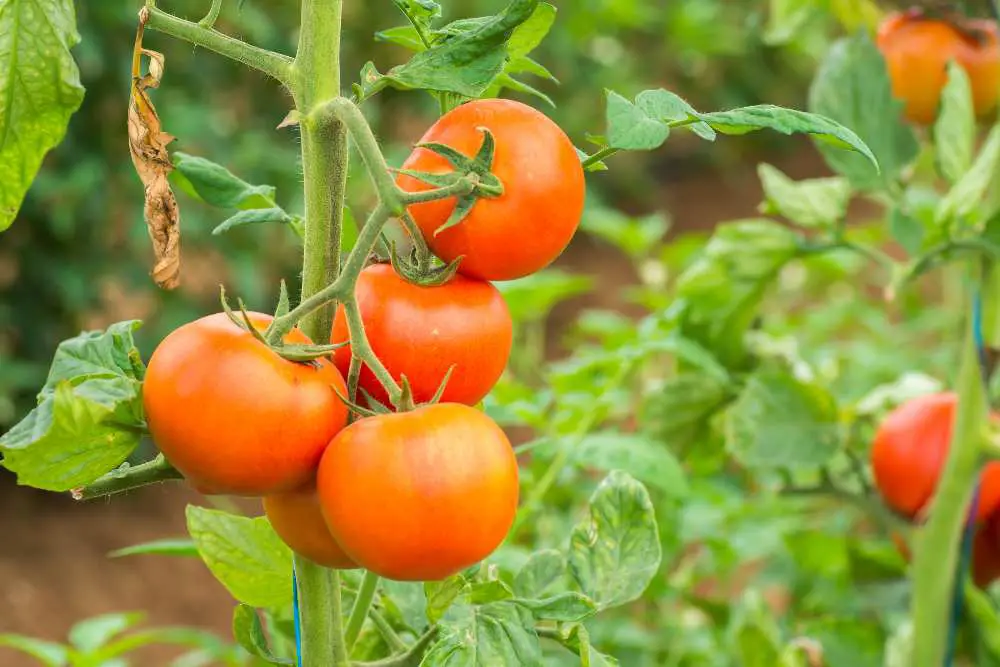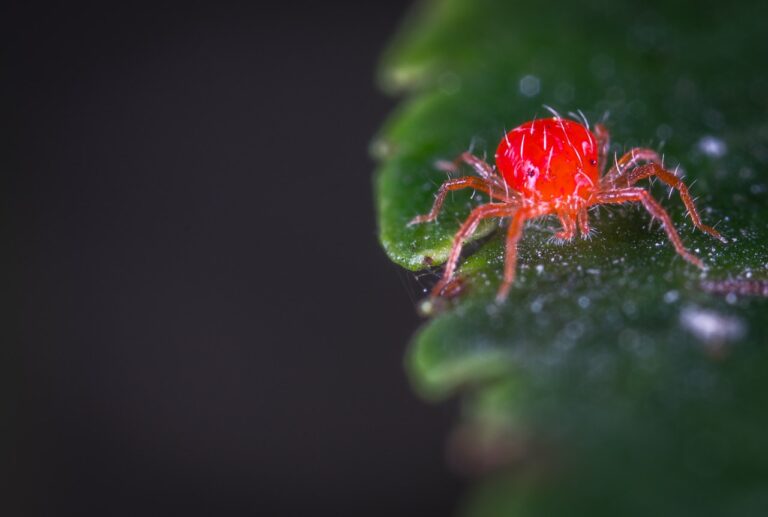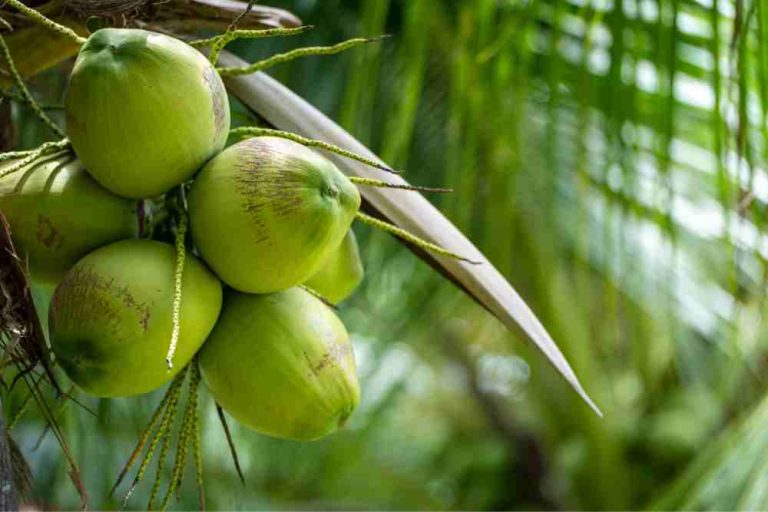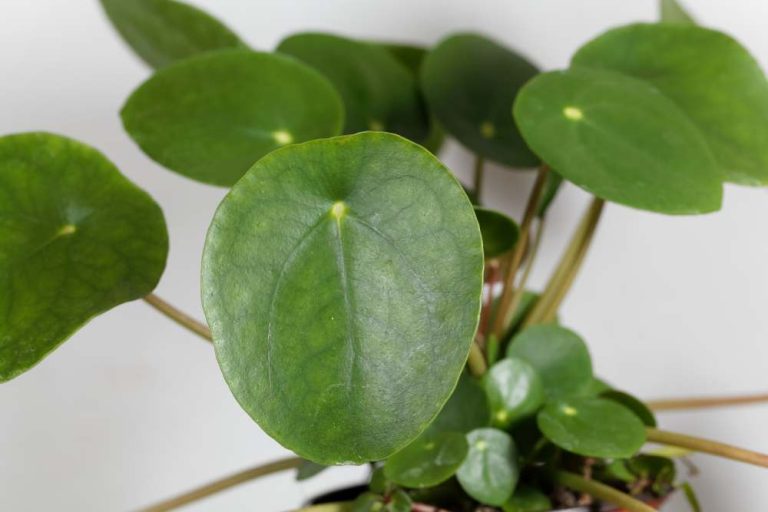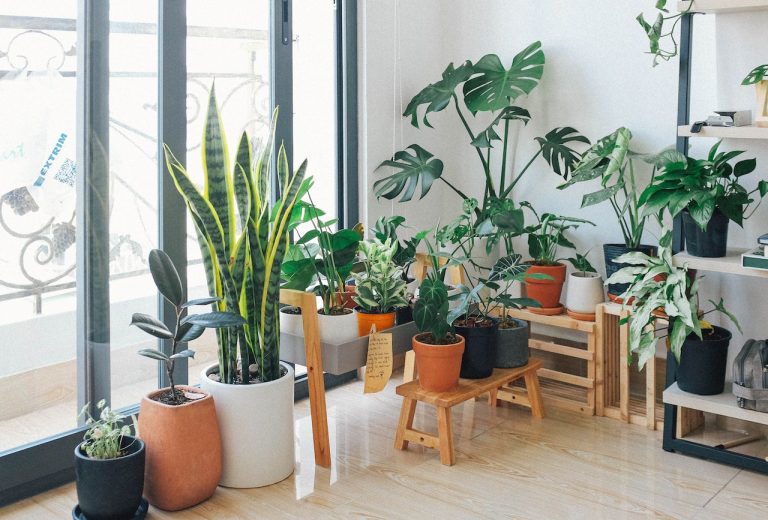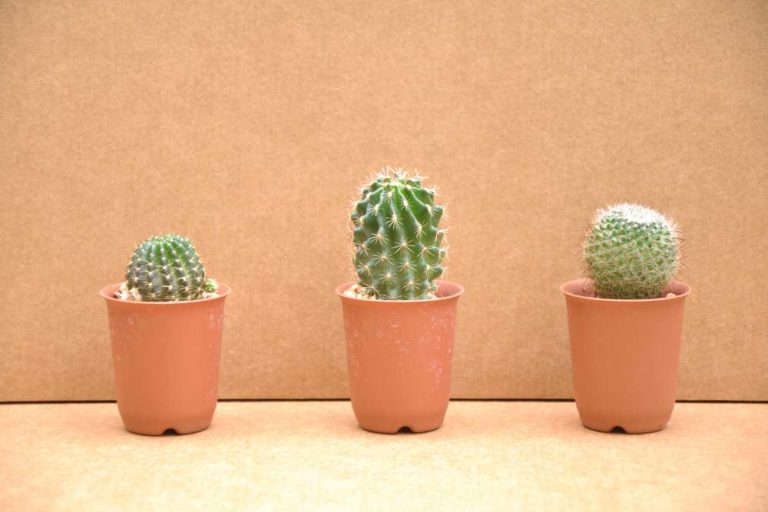Why are my Tomato Leaves Turning Yellow and What You can Do?
The rising costs of groceries in the stores have made many families or green thumb dads seek homegrown alternatives or at least consider doing so. Vegetables are an excellent example of food items people cultivate in their backyards. And the vegetable we are going to talk about is the tomato.
Tomatoes are easy to nurture and grow. They don’t require much space and will do well in your typical backyard soil that has swallowed a lot of organic waste over the years.
A healthy tomato farm is lush and green, but when the plants start turning yellow… oh, snap, is that your favorite color?.. It’s time to sit up and start planning your lines of action. But you can only mount your best response when you know what’s causing your tomato leaves to turn yellow, right? Cause before response, or what do you think?
Now let’s analyze the reasons why are my tomato leaves turning yellow, and then we’ll discuss the solutions.
15 Causes of Yellowing in Tomato Leaves
1. Watering Problems
Watering isn’t just dousing the plants with water or flooding the surrounding soil. That’s where the problem starts. Many farmers, especially the amateur ones, give little thought to how much water they give their plants.
Like any other thing, water should not be in excess, nor should you skimp on it. You must strike the right balance—just enough, no more, no less.
Excess watering can cause root rot, and the plant begins to die gradually. Underwatering will deprive the plant and weaken it. So give just the right amount of water according to the age of the plant. Also, and very importantly, provide careful thought to how you water.
2. Soil Compaction
Soil compaction is when the soil is tightly packed together and becomes dense. In that case, the aeration will be minimal. The roots suffocate when there is little or no oxygen in the soil. *yes, like a typical human*
When that happens, they can no longer transport nutrients to all parts of the plant, and yellowing is one way of protesting.
To avoid soil compaction in the first place, avoid legs trampling on the soil. You can use raised garden beds to avert that problem. If you don’t want to use raised beds, make sure that the ground of your choice is loose and well-aerated.
3. Transfer Shock
Blame transfer (or transplant) shock if you notice the yellowing of leaves a few days or a week after transplanting seedlings. The reason is that just like humans, plants also need time to adjust their natural systems to their new environment. But transplant shock is not usually something to lose sleep over. It clears up in a few days, and you’ll know when the yellow leaves start dropping and are replaced by fresh ones.
Nevertheless, transplant shock is a problem that is best avoided as it can, in extreme cases, cost you a good crop. You can minimize the likelihood of transfer shock happening if you let the new soil warm first. Also, if you notice the yellowing of leaves soon after transplanting, speed up recovery by plucking the yellow leaves from the plant.
4. Iron Chlorosis
Chlorosis or greensickness means that the plant can’t produce sufficient chlorophyll, that green pigment responsible for photosynthesis. It can have several causes, and iron deficiency is just one of them. Either the soil is deficient in iron, or the plant can’t absorb the iron from the ground.
If you suspect that iron chlorosis is the cause of your plant’s yellowing, try adjusting the soil pH to between 5.5 to 7.5. Iron is in its more absorbable form in more acidic soil.
5. Magnesium Deficiency
Magnesium deficiency is another prime suspect for the yellowing of leaves. Aside from iron, magnesium is a critical component of chlorophyll, and lack of it can spell danger for the plant. Magnesium deficiency can also be resolved by making the soil more acidic.
The usual range of pH for magnesium availability is 5.5 to 6.5. However, if the soil pH is already in the acceptable range for magnesium ions to be abundant and the soil still lacks the mineral, you can try adding fertilizers that contain magnesium.
6. Tobacco / Tomato Mosaic Virus (ToMV)
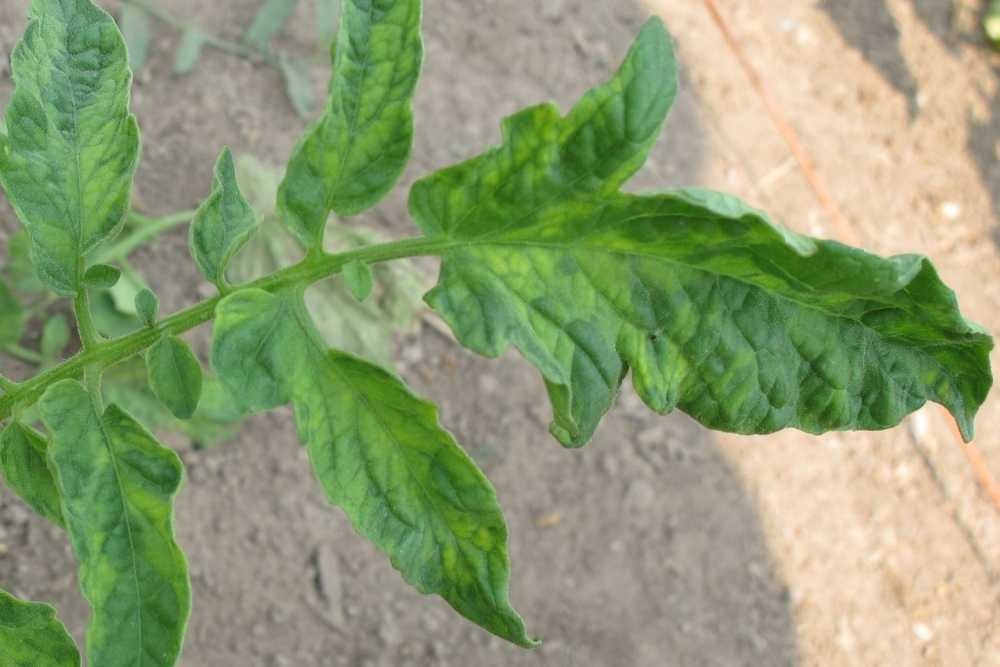
ToMV is a viral infection that usually affects plants by reducing their yield rather than killing them. It’s usually spread by pests and contaminated tools and can enter the plant through the tiniest wound.
The disease is incurable, and once any plant is affected, it has to be removed and destroyed fast before it can infect other plants. If a whole crop is affected, choose a different location for your next one.
7. Fusarium Wilt / Verticillium Wilt
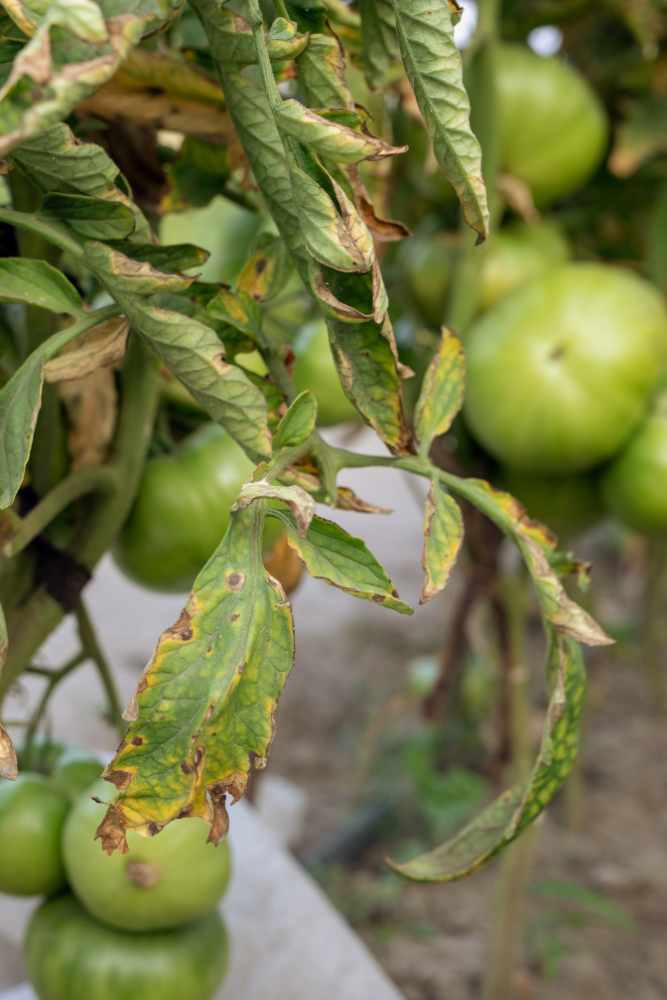
Fusarium wilt is a fungal disease and is more common in warm weather. It mainly affects seedlings. Verticillium wilt is also fungal but is not as common and affects older plants.
Fusarium wilt and Verticillium wilt often manifest when yellowing is on one side of the stem or leaf. To confirm, slice the stem of a suspicious tomato stem lengthwise and see if it’s dark brown inside. If it’s Fusarium or Verticillium, remove and burn the plant (s), as the disease is also incurable.
8. Early Blight
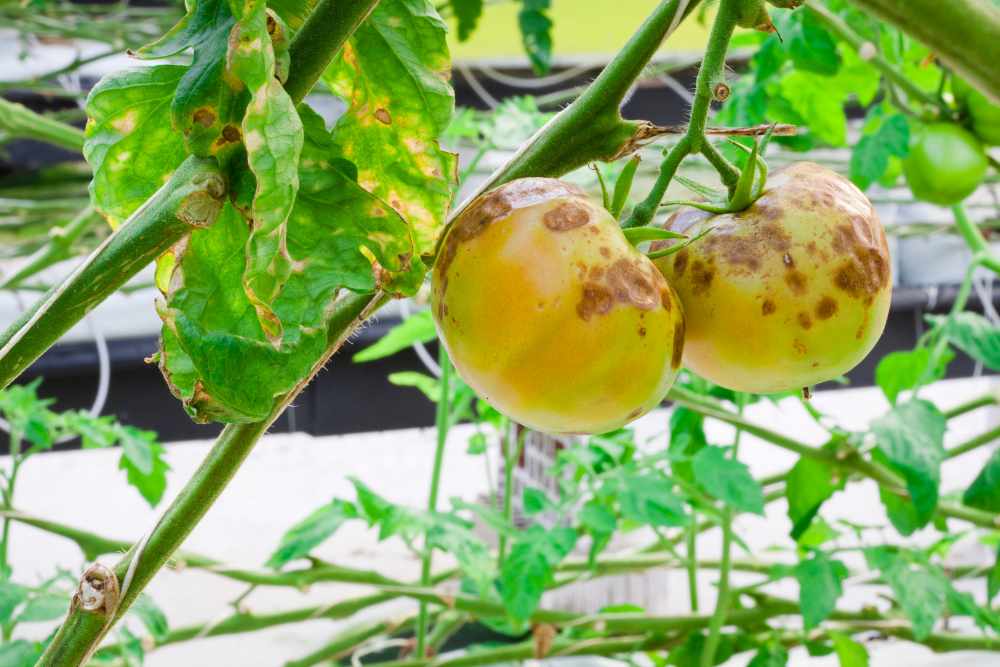
Early Blight is caused by Alternaria linaria. Indications for the disease include concentric bulls-eye rings surrounded by yellow tissue. As the disease progresses, the plant’s foliage starts to wither and fall off, exposing the tomato fruits to burn from the harsh sun.
Thankfully, the disease can be cured if immediate action is taken before the disease takes over the plants. You will need to spray an organic fungicide, preferably Bonide Liquid Copper Fungicide. Ensure you water the crop before treatment, as hydration is super important.
9. Tomato Yellow Leaf Curl Virus
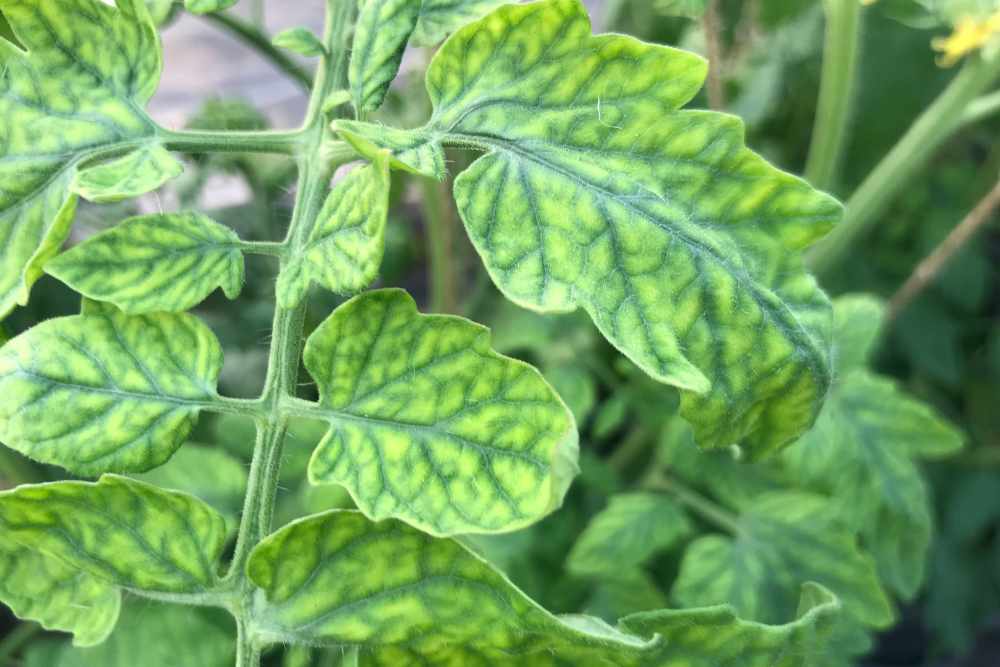
In addition to the yellowing leaves, this disease also causes affected plants to curl their leaves, hence the name. The disease is spread by white flies, which get it from feeding on affected plants. The virus is on the list of incurable pathogens. Once a plant catches it, that plant should be disposed of and burned immediately.
The problem is best avoided by scaring away white flies by natural and chemical means. Ladybirds are a natural enemy of white flies. For pesticides, consider canola oil spray with a very dilute soap solution.
10. Walnut Toxicity
Walnut toxicity is caused by the harmful substance that black walnut trees produce, known as juglone. This chemical compound can drip onto tomato plants near a black walnut tree and induce chemical processes that result in the yellowing and wilting of leaves and, eventually, the death of the plant.
There’s no antidote to reverse the effects of juglone on an affected plant. The best prevention plan is to ensure no black walnut trees around your plants or your farm. Affected plants should be disposed of immediately, and if walnut trees are around, ensure a considerable distance between them and your seedlings.
11. Septoria Leaf Spot

The parts of the plant most affected by Septoria lycopersici are the foliage, petioles, and stems but not the fruit.
The pathogen that causes Septoria leaf can get to the plants in several ways. Still, rainwater splashing from the ground on the plant’s body is the most common way. Lycopersici is a hardy fungus that can survive winters and likes temperatures as low as 20°C.
The disease progresses from the oldest growth to the youngest, leading to the leaves having many spots on them. The condition is incurable in the affected leaves, and the latter has to be removed to prevent the situation from worsening.
12. Leaf Mold
Leaf mold is common among tomatoes, mainly because of their luxuriant foliage. The older leaves nearest to the ground may be deprived of enough air, and high humidity worsens the problem. The causative organism of leaf mold is the fungus Passalora fulva, which finds its home in the soil and on crop residue.
Passalora fulva spores share the same method of transmission as many other pathogens, namely, through contaminated soil, water, tools, and even animal or human contact. Since low air circulation is the fertilizing ground for leaf mold, any farming practice encouraging air circulation will help deal with the problem. Staking and pruning can be practical.
13. Bacteria Spot

At first, bacteria spots can be similar to other diseases in tomato plants, especially early blight. Unlike the latter, you can tell bacteria spots from early blight because the former doesn’t result in concentric zones. Aside from the yellowing of leaves, bacterial spots, as the guests suggest, will create spots that fall out in the center, leaving holes in the leaves.
Bacterial spot is caused by bacteria hence the name. But it’s not just one bacterial type (the same species, though) that causes the disease. Four work in tandem to discolor plant leaves and render the fruits unmarketable.
The bacteria are Xanthomonas vesicatoria, X. euvesicatoria, X. gardneri, and X. perforans. The bacteria mentioned above like high temperatures up to 86°F and thrive in a combination of high humidity and plenty of water from either rainfall or overhead irrigation.
14. Tomato Pith Necrosis
Tomato pith necrosis is another suspect when tomato leaves are yellowing and wilting. The disease can affect tomatoes farmed in an open space or a greenhouse. The condition likes to target the early growth stages and is encouraged by high humidity, cool night temperatures, and the heavy presence of nitrogen.
The vector responsible for the disease is pseudomonas corrugata. Other soil-borne species of Pseudomonas can also cause it. In its more severe stages, tomato pith necrosis can cause chlorosis and black and brown spots and can severely damage the stems of plants both inside and outside.
15. End of the Season
This is not a cause for panic since, after all, all life must leave this life (pun intended). But pun aside, once the season of tomatoes ends, the plant prepares for its eternal rest by yellowing its leaves and shedding off until the whole plant dies.
What you can do in that case is to clip off the yellowed leaves to allow the plant to direct the rest of its powers to ripen the fruits.
Diagnosing The Causes of Yellowing in Leaves
Yellowing in leaves can be from a natural cause (it could be part of their growth cycle). Other times, it’s not. And sometimes, it could be a sign that your plants are in serious trouble. In any case, figuring out why your plants have yellow leaves can give you a clue as to whether to act or to leave it alone and let nature take its course.
And when you need to act, you should know what to tackle the problem with. Pro tip: perform one step at a time and give your plant(s) time to adjust before applying another step if necessary. So here we go. Let’s see how you can effectively diagnose a particular cause of yellowing leaves.
Rule Out Any Natural Cause
The first thing you need to do is rule out any natural process. The two periods you’ll need to do that are: (1) When the cotyledon leaves are getting yellow and (2) towards the end of the growth cycle.
When the seed leaves start yellowing, they’ve completed their job of supplying the young plants with the nutrients for growth. Very soon, the seed leaves will fall off and be replaced by the real leaves.
Towards the end of the plant’s life cycle, when it’s producing its last batch of fruits, the leaves will start yellowing and wilting, signaling that the plant will soon end its life cycle. Once you’ve ruled out the above, it’s time to check for other things.
Check Watering Habits
Screen your farming habits, especially when it comes to watering. Do you drench your plants with water thinking that the more, the better? That’s the most likely cause of yellowing leaves.
Excess water can inhibit essential chemical processes in plants, and yellowing is just one of the effects. Worse, overwatering drains the soil’s oxygen and can induce root rot. We’ll get to proper watering habits quickly, but let’s identify another leaf yellowing leaves.
Plant Disease & Pests
Check your tomato plants for wilting. Aside from that, do you notice spots or holes in the leaves? Are the young plants drooping? Take some stem samples and slice them open. Do you see signs of rot in them? Is the yellowing on only one side of the leaves or stems?
If your answer to any of those questions is yes, then your plants may be testing positive for a bacterial or fungal disease. If that’s the case, go for a pesticide to tackle that disease. Better still, since some of those diseases are incurable, remove affected plants and burn them.
Mineral Deficiencies
If you didn’t spot any of the above conditions, the problem is simply a nutrient deficiency. Iron or magnesium could be lacking but can be quickly restored by applying the appropriate fertilizer. Now that we’ve known how to diagnose an ailing plant let’s talk about the solutions to the yellowing of leaves.
Solutions To Yellowing of Leaves
A few tips can help you water your crops correctly for the problem of overwatering.
- The first rule is don’t water the leaves; water the roots. In other words, avoid the practice of pouring water on the leaves. Instead, gently soak the soil and let the water sip into it. Don’t overwhelm the plant roots with excess water.
- Another precaution is to water in the morning and evening. Avoid mid-day watering when the weather is hot, as the water will quickly evaporate before the plants can use it.
- In addition, ensure you also avoid the problem of underwatering by watering regularly. You’ll need to water your plants more frequently in the warmer seasons. Try to water at least every 2-3 days during summer and at least once a week when the fruits develop.
- When bacterial or fungal diseases are the problem, up your game to deal with the menace. If you see signs of infection on your plants, you may have to consult a professional in plant disease treatment.
- If pests are the issue, you can employ mild pesticides and hand-picking. For instance, spider mites can be killed with a soapy water mixture. You can use insecticidal soaps to deal with thrips. Certain plants can also scare away pests. Plants like chrysanthemums near your tomatoes will discourage potato aphids.
- What about nutrient deficiencies? The best way to tackle that issue is to use a soil test kit to test the soil instead of merely looking at the plant’s appearance and guessing the problem.
- In addition to determining which nutrients might be missing, a soil test kit can reveal the soil pH. Alternatively, you can send a soil sample to a lab to test.
- The ideal soil pH for tomatoes ranges between 6.2 and 6.8. That’s slightly acidic. If that balance is upset, it can affect the availability of mineral nutrients.
- Nutrients can be added to the soil depending on the mineral in question.
- Adding lime to the soil and powdered eggshells is an excellent way to enrich the soil with calcium. Blood meal will add iron, and Epsom salts dissolved in water will provide the needed magnesium.
Conclusion
Yellowing in tomato leaves can cause concern, but it can be resolved without much hassle. You need to identify the root of the problem, which often boils down to lousy watering habits, nutrient deficiencies, pests, and diseases.
As with many other farming issues, tomato leaves getting yellow can give you much headache but stay calm and conduct a thorough investigation into the problem with the information this article contains If you do so, you will avoid rash action that could escalate the problem and cost you your whole crop of tomatoes. You’ll not apply pesticides when all you might need to do is to adjust your watering habits. Neither will you be serving loads of compost when the yellow leaves are simply a result of the growth cycle.
- 15 Ingenious Kitchen Garden Ideas to Cultivate Freshness Right at Home - April 7, 2024
- 10 Top Picks Best Plants for Open Terrarium - April 2, 2024
- 21 Easy and Cheap Walkway Ideas for a Charming Garden - March 31, 2024

